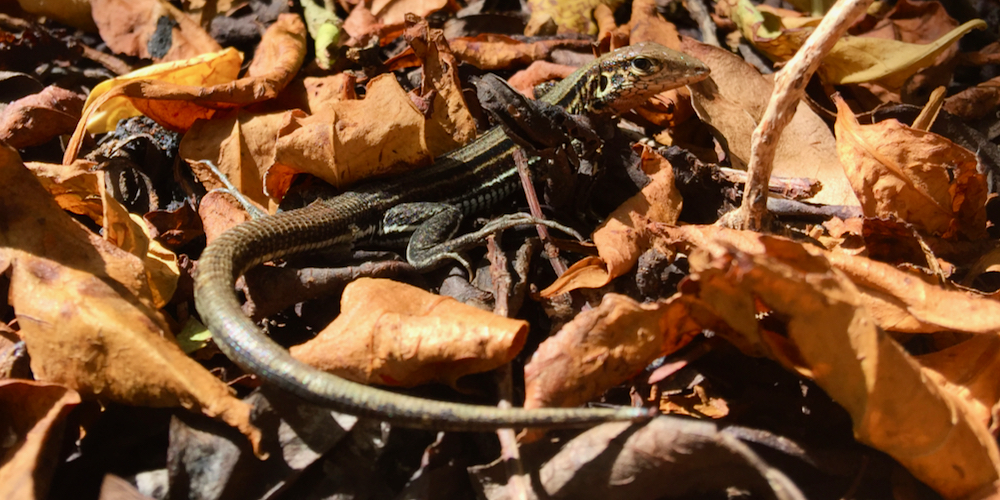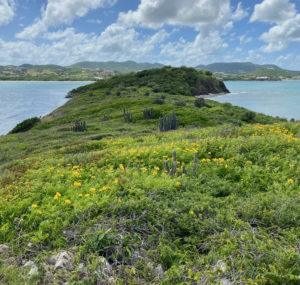
The St. Croix ground lizard is so rare that it is no longer found on its namesake island, having been eliminated by mongoose and degraded habitats. Now, a coordinated effort is underway to preserve and grow the remaining number of reptiles where they flourish.
According to Jennifer Valiulis, acting director of the St. Croix Environmental Association, the lizards remain only on the four small islands around St. Croix – Buck Island, Protestant Cay, Ruth or Shell Island and Green Cay.

Green Cay is 14 acres, about 400 meters off the north coast of St. Croix, protected by the U.S. Fish and Wildlife Service and is one of the partners in the “big cooperative project.” The National Park Service and the U.S. Department of Agriculture are also participating.
The first steps include mapping invasive grasses on Green Cay and refining the list of all of the plants growing there. And, Valiulis said, the ground lizard population will be tallied since there is no idea how many live on the cay now.
Eradicating rats and hurricane grasses will make the ground more lizard-friendly. Whether the rats eat the lizards or their eggs, they are a menace because they destroy the leaf litter where the lizards like to live. Hurricane grass forms dense mats as it grows and hinders the reptiles’ movement.
The USDA is contracted to discover the proper way to dispose of the grasses. Some will be removed physically, but herbicides may have to be used, Valiulis said.
“They’ve done this before. They know how. There are experts in the organization that know what can safely be used and not linger in the environment,” she said.
Valiulis said the tiny island is hot, hilly and has uneven ground with “everything spiny.” After the grass has been removed, native trees will be planted by volunteers, who are “willing to put up with the elements.”
Endemic seeds and seedlings, such as the buttonwood tree, pink poui, orange manjack and native frangipani, will provide a hospitable landscape for the ground lizards. Some of the plants will be provided by the National Wildlife Refuge’s greenhouse at Sandy Point.
“We hope in the next couple of weeks to do a quick planting. They’re ready to go and can withstand the weather,” the SEA director said, adding that most will be planted during the next growing season.
The NPS will provide kayaks and boats to transport plants to and from the small island while removing the invasive species and introducing native species.
Over the next year, the project will unfold on the petite cay, depending on circumstances with the weather, availability of supplies and the COVID-19 pandemic, Valiulis said.
Contrary to what many people believe, the lizard found on La Grande Princess Hill is not the St. Croix ground lizard but the Puerto Rico ground lizard. It was introduced to the island in the 1990s, she said, and perhaps “hitchhiked” to St. Croix in a ship or with plants delivered to the nearby Garden Spot nursery.
Volunteers who want to help with the project can contact Valiulis at info.atsea@gmail.com.


